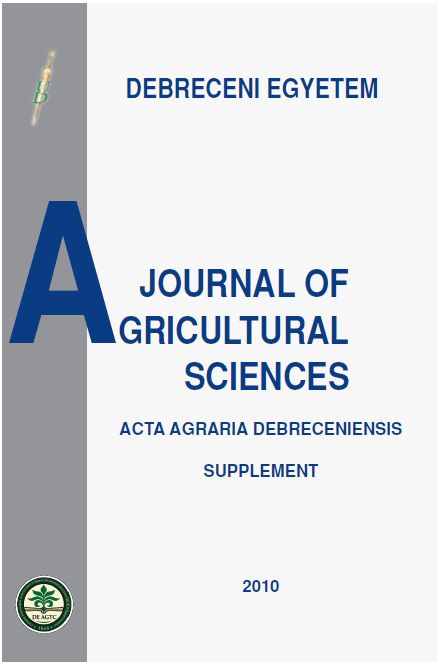Determining elements of variety-specific maize production technology
Authors
View
Keywords
License

This work is licensed under a Creative Commons Attribution 4.0 International License.
How To Cite
Abstract
Our aim was to work out such new maize fertilizer methods and models which can reduce the harmful effects of fertilization, can
maintain the soil fertility and can moderate the yield fluctuation (nowadays 50-60 %).
The soil of our experimental projects was meadow soil. The soil could be characterized by high clay content and pour phosphorus and
medium potassium contents. In the last decade, out of ten years six years were dry and hot in our region. So the importance of crop-rotation
is increasing and we have to strive for using the appropriate crop rotation.
The yields of maize in monoculture crop rotation decreased by 1-3 t ha-1 in each dry year during the experiment (1983, 1990, 1992,
1993, 1994, 1995, 1998, 2000, 2003, and 2007). The most favourable forecrop of maize was wheat, medium was the biculture crop rotation
and the worst crop rotation was the monoculture.
There is a strong correlation between the sowing time and the yield of maize hybrids, but this interactive effect can be modified by the
amount and distribution of precipitation in the vegetation period. At the early sowing time, the grain moistures were 5-12 % lower compared
to the late sowing time and 4-5 % lower compared to the optimum sowing treatment.
There are great differences among the plant density of different maize hybrids. There are hybrids sensitive to higher plant density and
there are hybrids with wide and narrow optimum plant densities.
The agro-ecological optimum fertilizer dosage of hybrids with a longer season (FAO 400-500) was N 30-40 kg ha-1 higher in favourable
years as compared to early hybrids.
We can summarize our results by saying that we have to use hybrid-specific technologies in maize production. In the future, we have to
increase the level of inputs and have to apply the best appropriate hybrids and with respect to the agroecologial conditions, we can better
utilize the genetic yield potential.

 https://doi.org/10.34101/ACTAAGRAR/I/8395
https://doi.org/10.34101/ACTAAGRAR/I/8395